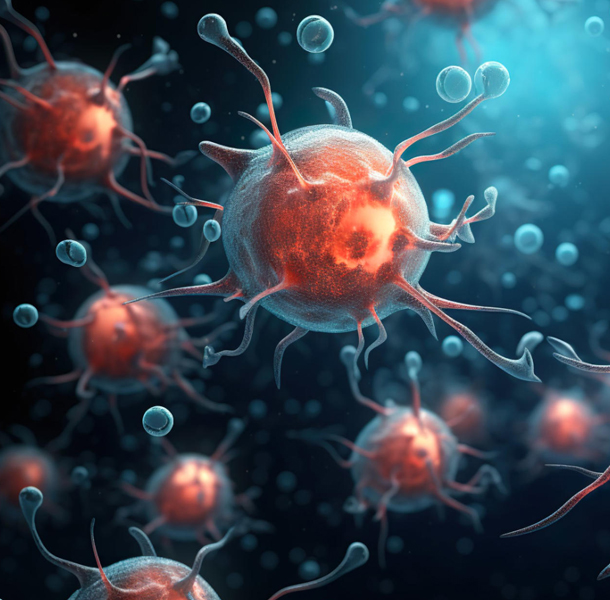The classification of Arbuda can be grouped into the following categories:
- Types based on body humor (dosa).
- Types based on location in the body.
- Types based on prognosis.
- Types based on tissue (dhatu) involvement.
Arbuda can be classified into Vataja, Pittaja, Kaphaja, and Tridosaja based on body humor imbalance.
It can also involve different tissues such as fatty tissue, muscular tissue, blood, and bone.
Arbuda can occur in various parts of the body, including the eyes, ears, nose, mouth, throat, and head etc.
Arbudas are classified as curable or incurable based on their prognosis. Recurrence and metastasis are also described.
Sushruta described chronic ulcers with raised edges and firm fleshy masses suggesting the possibility of malignancy.
The following conditions are associated with potential malignancy: Mamsaja Ostha, Alasa, Mamsa Kacchapa, Galaudha, Asadhya Galaganda, Tridosaja Gulma, Asadhya Vrana, and Lingarsa, along with their respective symptoms. While these conditions may suggest malignancy, definitively ruling it out can be challenging. It’s important to consider the full range of possibilities when evaluating symptoms, as it can be challenging to rule out malignancy based solely on signs and symptoms. Various conditions such as Tridoshaja Nadi Vrana, Asadhya Pradar, Asadhya Kamala, and Carmakila present specific symptomatology that could be indicative of more serious underlying issues. The ancient Indian and clinician period studies demonstrate a deep understanding of malignancy etiopathogenesis, types, sites, stages, and spread. Furthermore, these studies provide detailed insights into the management of these diseases in the context of Ayurveda.
Both ancient physician Hippocrates and Ayurvedic practitioners believed that “All disease begins in the gut,” emphasizing the importance of managing digestion and diet for maintaining health. According to Ayurveda, improper food consumption and routines can impair digestion and lead to toxic buildup, promoting inflammation and interfering with immune functioning.
Two important Ayurvedic principles related to digestion are Agni and Ama, which represent digestive fire and toxins, respectively. Chronic inflammation, influenced by the gut microbiome, is a precursor to conditions such as cancer. The gut microbiome’s role in inflammation and cancer has become a significant area of research. Ayurvedic perspectives highlight the impact of dietary habits and lifestyle factors on intestinal permeability and barrier function.
Ayurveda recognizes six tastes that can either aggravate or pacify these doshas. Additionally, spices are considered vital in supporting the process of digestion and absorption.
Specific therapeutic spices, such as turmeric, ginger, black pepper, and pippali, are known to enhance the metabolism of the gut microbiome, thereby improving digestion. One common Ayurvedic formulation, known as Trikatu, combines equal quantities of ginger, black pepper, and pippali to promote digestion and increase the bioavailability of drugs. This combination is highly valued for its ability to support digestive health.
The pathogenic process involving the interaction of the Tridoshas in the development and progression of cancer has been extensively documented by Ayurvedic physicians. In the realm of Ayurvedic treatment, there is a strong emphasis on fortifying digestion, reducing Ama (toxins), and enhancing tissue metabolism to combat cancer.
Furthermore, Ayurvedic treatments are designed to bolster the body’s innate self-healing mechanisms, reinstate natural defenses, and revitalize key bodily systems. Panchakarma, a comprehensive multi-day cleansing regimen, is often utilized to support the body’s capacity for self-repair.
Ayurveda can help reduce the therapeutic dose of drugs and minimize their side effects. It can also act as a supplement to chemotherapy and radiation therapy, and has been found to reduce the toxic effects of these treatments. Additionally, Ayurvedic preparations have antioxidant properties and can improve the quality of life for individuals with cancer.
The main goal of Ayurvedic therapy is to find the ultimate cause of an illness. Ayurvedic therapeutic approach is divided into four categories:
- health maintenance,
- restoration of normal function,
- disease cure, and
- spiritual approach.
Various Ayurvedic herbal preparations, such as Andrographis paniculata, Phyllanthus niruri, Curcuma domestica, and others, have scientific evidence of anticancer properties.
The modern cancer therapy is burdened by drug-induced toxic side effects, but there is hope for a perfect cure from the complementary and alternative medicine system. Ayurvedic therapy aims to find the ultimate cause of an illness and is divided into four categories: health maintenance, restoration of normal function, disease cure, and spiritual approach.
Commonly used herbal decoctions in Ayurveda have great potential for cancer cure by working on multiple biochemical pathways and influencing different organ systems.
Herbs can help in total healing, reduce side effects, and cancer-associated complications. Various plants with scientific evidence of anticancer properties include Andrographis paniculata, Annona atemoya, Phyllanthus niruri, Piper longum, and many more.
Many herbs are being studied for their potential in fighting cancer. Over 25% of drugs in the last 20 years are derived from plants, and many plant-derived compounds have been approved as anticancer drugs.
These compounds work together to provide therapeutic benefits and reduce the risk of adverse effects. It’s important to raise awareness about the use of Ayurvedic therapies in cancer treatment for an integrated approach to tumor management.
The drugs used in Rasayana therapy are known for their ability to address imbalances related to vata, pitta, and kapha, which are the three doshas. Some of the most commonly prescribed Rasayana drugs include Triphala, Guduchi, and Punarnava.
Clinical studies have indicated that these drugs have had positive effects in protecting the body from the side effects of chemotherapy and radiotherapy, such as alopecia, nausea, constipation, anorexia, and vomiting. Patients who have received Ayurvedic treatment alongside chemotherapy have shown improved adherence to chemotherapy cycles, as their hematological levels can be better maintained. Over 50 research studies on cancer conducted at various post-graduate institutes have demonstrated the effectiveness of Ayurvedic preparations as chemo-preventive and radio-preventive agents.
Research suggests that chronic stress and depression may impact cancer outcomes. Ayurvedic lifestyle practices such as yoga and meditation show promise in moderating the effects of stress on cancer survival and quality of life.

